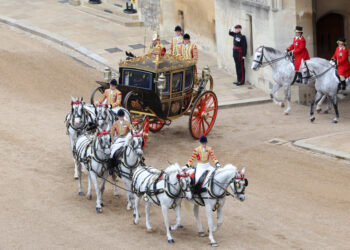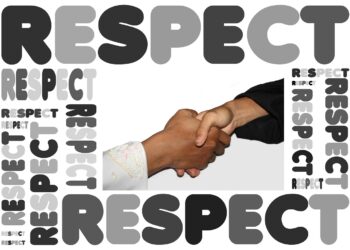Para leer el artículo en español, clicar aquí
 As the World Protocol Magazine Editorial Board, we take enormous pride in keeping this platform open to all experts from the numerous fields of business and protocol: María Cristina Castro Villafranca, from Costa Rica is the next of many who have taken the opportunity of working together with WPM.
As the World Protocol Magazine Editorial Board, we take enormous pride in keeping this platform open to all experts from the numerous fields of business and protocol: María Cristina Castro Villafranca, from Costa Rica is the next of many who have taken the opportunity of working together with WPM.
Ms Castro Villafranca is the Deputy Chief of Protocol at the Ministry of Foreign Affairs and Worship of Costa Rica, founding member of the World Protocol Organization (OMP) and career ambassador.
She has 20 years of experience in project management, diplomatic démarche, effective communication, document systematization, competitiveness analysis and public relations. She is an expert and lecturer in Etiquette and Protocol. In her first article published by WPM, she explores fashion and diplomacy as a whole.
Fashion Diplomacy, a form of non-verbal communication that world leaders use to convey and manifest political messages, a way to express foreign policy matters through image.
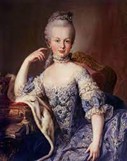
First, we may think about Venice where art, textiles and world trade systems made the city world famous, or relate to the celestial courts of Marie-Antoinette who left her footprint in fashion history. Rococo style was a leading factor in keeping France the fashion capital of Europe during the 18th century when clothing was a powerful symbol of nationality.
Women of high-profile in their way of communication tend to use femininity as a power tool demonstrated in attires and image. Their choice of dressing reflects who they are aiming to radiate power and confidence which is a fundamental part of soft politics.
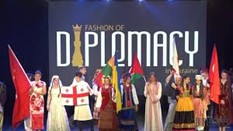 Gastronomy, arts and sciences are the preferred topics used as ice breakers during diplomatic or political conversations between leaders. Fashion could be included as well among female leaders – as a way to convey messages and build bridges. The international diplomatic community in key places like Washington DC, is starting to realize that fashion could indeed play an important role. Fashion plays an integral role in numerous nations’ cultural identity just like sports do in others. Fashion has a distinct way of sending messages and causing impact, for instance, diplomacy also has a certain glamour at times. Communication through cultural diplomacy often can be more efficient than through traditional diplomacy.
Gastronomy, arts and sciences are the preferred topics used as ice breakers during diplomatic or political conversations between leaders. Fashion could be included as well among female leaders – as a way to convey messages and build bridges. The international diplomatic community in key places like Washington DC, is starting to realize that fashion could indeed play an important role. Fashion plays an integral role in numerous nations’ cultural identity just like sports do in others. Fashion has a distinct way of sending messages and causing impact, for instance, diplomacy also has a certain glamour at times. Communication through cultural diplomacy often can be more efficient than through traditional diplomacy.
Today, at the State Department in the US Capital, glamorous diplomatic events are taking place. For countries intending to enter into the world of fashion, these occasions become critical both from a financial and cultural standpoint.
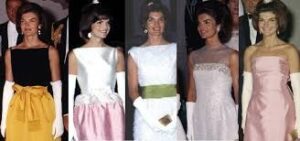 We know that protocol facilitates and organizes the diplomatic sphere and defines dress codes accordingly.
We know that protocol facilitates and organizes the diplomatic sphere and defines dress codes accordingly.
All elements of interaction such as menus, programs, settings and attires are carefully planned in order to create the best atmosphere possible for productive diplomatic talks. We must reiterate how important it is to follow diplomatic protocol in our personal appearance, too, whilst adapting to the country’s standards, customs and traditions.
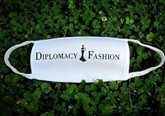 The dress you wear demonstrates self-respect and expresses general respect towards the event and its host/hostess. This is the reason why invitations specify dress codes like “formal dress”, “black tie”, “informal” “ladies’ long gown”, “morning dress,” “tuxedo for gentlemen” and so on. These indications make sure the guests shall look their best at any occasion – avoiding the embarrassing moments of feeling overdressed or underdressed.
The dress you wear demonstrates self-respect and expresses general respect towards the event and its host/hostess. This is the reason why invitations specify dress codes like “formal dress”, “black tie”, “informal” “ladies’ long gown”, “morning dress,” “tuxedo for gentlemen” and so on. These indications make sure the guests shall look their best at any occasion – avoiding the embarrassing moments of feeling overdressed or underdressed.
Strong female leaders embrace the power of fashion through sophistication and style. Although tastes may vary, they can even express certain foreign policy issues.
And now, let me name some of the outstanding female leaders, icons best known for their fashion statements:
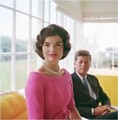
Jackie Kennedy: the former first lady is a true fashion icon, without a doubt of endless influence. Her fabulous classic style and elegance in my opinion makes her the best dressed First Lady of all times. Her love for elegant and timeless styles, French designers like Chanel, and later American designers like Oleg Cassini, is why she is still referenced today. Her costumes, pillbox hats, gloves, boat-necks, pearls and mod capes and dresses are all parts of Jackie Kennedy’s most notable looks. She remains inspirational many decades later.
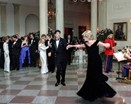
Diana Spencer, Princess of Wales: Her beauty, her kindness, her humanitarian work during her life taken way too soon. She left an immense legacy, and her passing is a huge loss. The people’s princess, she was often called besides England’s rose. Lady Diana has been regarded as one of the best dressed women in history next to Audrey Hepburn and Jackie Kennedy. Her sensitivity made her deeply aware of how clothing could affect and shape her public image.

Madeline Albright, former United States Secretary of State: After imposing sanctions on Iraq following the Gulf War, a poem appeared in the Baghdad Press referring to her as an “unparalleled serpent”. During her next meeting with Iraqi leaders, Albright reclaimed the serpent image in retaliation with an elegant pin. In her book, Read My Pins, the former Secretary of State explains how she used her jewelry and pins as diplomatic tools during the years she served under the Clinton Administration, like Nancy Pelosi, Speaker of the House of Representatives has done so in more recent times.
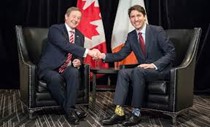
Hilary Clinton: her famous button-down pantsuits made her powerful and professional and equal to men with her style being iconic but not necessarily glamorous.
Angela Merkel, Chancellor of Germany: she is one of the world’s most powerful women yet lives a simple life. Once she was asked by a journalist about her outfits, she responded…¨my job is to serve my countrymen, not to expose myself as a role model¨.
 Melania Trump, former First Lady of the United States: Many fashion experts pointed out the former First Lady’s putting aside conveying messages through dressing choices, blaming her for the downfall of fashion diplomacy for American leaders. Her lack of care for certain issues was definitely harmful for the designers’ images she chose to wear.
Melania Trump, former First Lady of the United States: Many fashion experts pointed out the former First Lady’s putting aside conveying messages through dressing choices, blaming her for the downfall of fashion diplomacy for American leaders. Her lack of care for certain issues was definitely harmful for the designers’ images she chose to wear.
Nancy Reagan, former First Lady: her personal style, good image and her signature love for red makes her an iconic figure of female leaders.
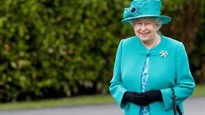 Of course, other truly remarkable ladies, like H.M. Queen Elizabeth II with her iconic purses and colorful outfits (also for security purposes), Grace Kelly, Princess of Monaco and the Grimaldi family, Rania, Queen of Jordan, Letizia, Queen of Spain and Catherine, the Duchess of Cambridge and many more women who are some ways or another have influenced the world not only through fashion but through important diplomatic and political subliminal statements throughout history.
Of course, other truly remarkable ladies, like H.M. Queen Elizabeth II with her iconic purses and colorful outfits (also for security purposes), Grace Kelly, Princess of Monaco and the Grimaldi family, Rania, Queen of Jordan, Letizia, Queen of Spain and Catherine, the Duchess of Cambridge and many more women who are some ways or another have influenced the world not only through fashion but through important diplomatic and political subliminal statements throughout history.
Fashion, though, is not something that only exists in dresses.
Fashion is in the sky, in the street, fashion has to do with ideas, the way we live, what is happening. To be irreplaceable, one must always be different.
Carolina Herrera, the famous Venezuelan-American designer once said: The woman who is not afraid to be feminine and chic with a strong sense of personal style- that is a Carolina Herrera woman!
Elegance isn’t solely defined by what you wear, of course. Fashion has always been a repetition of ideas but what makes it new is the way you combine the pieces. We must always choose style over fashion.
 Coco Chanel, the famous, timeless fashion designer, with her trademark little black dresses, suits, and pearls: “A woman needs ropes and ropes of pearls” and “A girl should be two things: classy and fabulous.”- -her famous sayings state.
Coco Chanel, the famous, timeless fashion designer, with her trademark little black dresses, suits, and pearls: “A woman needs ropes and ropes of pearls” and “A girl should be two things: classy and fabulous.”- -her famous sayings state.
As a diplomat, I have been long interested in protocol, fashion, diplomatic communication, and most importantly, in communicating via fashion. In this article I wanted to connect all my passions I hold close to my heart.
I hope I was able to show how amazing non-verbal communication channel fashion is with the power to express significant political messages. It’s rather captivating to see the choices wardrobe consultants make for their clients. I also encourage everyone to pay more attention to these fashion choices especially at major political and diplomatic events as attire does speak louder than words.

